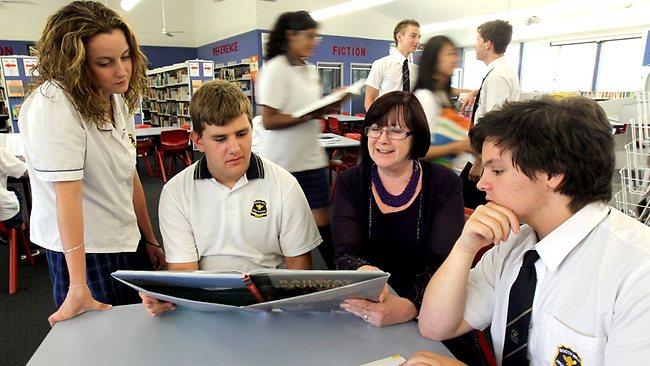Cheap as chips but worth so much more
FROM the outside, Rooty Hill High, in Sydney's sprawling western suburbs, is your average Australian high school.

FROM the outside, Rooty Hill High, in Sydney's sprawling western suburbs, is your average Australian high school. Its students come from families earning an average income. Their parents value education and want their children to have better a life.
The 1150 students score about average on the national literacy and numeracy tests. Their progress from year to year is also about the average. But principal Christine Cawsey says there's a different story behind the statistics.
While the school scores just below average on the measure of social and educational advantage on the My School website, Ms Cawsey says it also shows 70 per cent of its students are below average, with half falling in the lowest 25 per cent of the nation.
Yet because of anomalies in the way schools are funded by government, Rooty Hill High receives less money per student than the Catholic school down the road.
Rooty Hill High receives about $8700 for each student from the federal and state governments while St Agnes at Rooty Hill is handed $9100. Across town on the affluent north shore, Mercy Catholic College at Chatswood receives almost $11,000 per student.
Ms Cawsey, also president of the NSW Secondary Principals Council, said Rooty Hill was one of the bottom 10 schools in NSW, receiving the least amount of funding from the state government.
"We're a cheap as chips high school," she says.
Ms Cawsey says the school has about 500 students in the lowest socio-economic group, which is more than some of the schools receiving targeted government funding for disadvantaged students. "There's a group of schools like Rooty Hill that sit just above the cut-off for extra assistance but are still trying to respond to, and provide support to, students with the same issues as schools classified as disadvantaged," she says.
Because its students do quite well at school, Rooty Hill does not qualify for extra government funding to lift literacy and numeracy rates.
Because it has few single-parent or unemployed families, it does not qualify for extra government funding to help students from disadvantaged families.
Because its families earn the average and have little to spare, Rooty Hill is unable to raise much money from the community by charging fees or fundraising.
"Government schools in the leafy green suburbs don't get more from the government but they have a community resource. It's what the average schools don't have," Ms Cawsey says.


